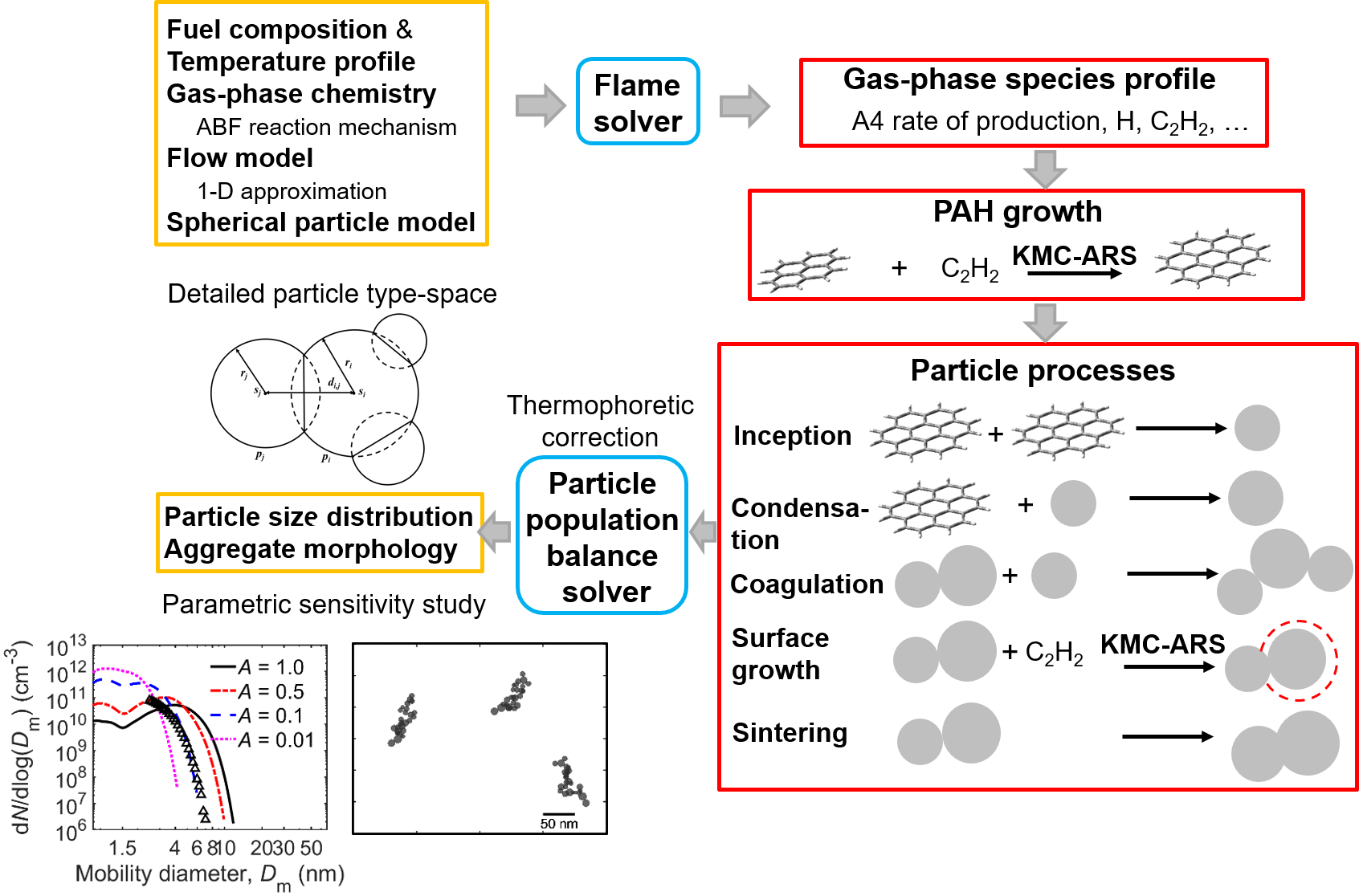Technical Report 212, c4e-Preprint Series, Cambridge
Modelling Soot Formation in a Benchmark Ethylene Stagnation Flame with a New Detailed Population Balance Model
Reference: Technical Report 212, c4e-Preprint Series, Cambridge, 2018
- A new detailed population balance model is presented for soot that is able to describe the evolution of aggregate morphology and primary particle composition.
- A two-step methodology that accounts for thermophoretic transport in the post-process was employed to simulate soot formation in a benchmark laminar premixed burner-stabilised stagnation ethylene flame.
- A thorough parametric sensitivity study was performed to understand the influence of key model parameters on the predicted PSDs and soot aggregate morphology.
 Numerical simulation of soot formation in a laminar premixed burner-stabilised benchmark
ethylene stagnation flame was performed with a new detailed population balance model employing
a two-step simulation methodology. In this model, soot particles are represented as aggregates
composed of overlapping primary particles, where each primary particle is composed of a number
of polycyclic aromatic hydrocarbons (PAHs). Coordinates of primary particles are tracked,
which enables simulation on particle morphology and provides more quantities that are directly
comparable to experimental observations. Parametric sensitivity study on the computed particle size distributions (PSDs) shows that the rate of production of pyrene and the collision efficiency have the most significant effect on the computed PSDs. Sensitivity of aggregate morphology to the sintering rate is studied by analysing the simulated primary particle size distributions (PPSDs) and transmission electron microscopy (TEM) images. The capability of the new model to predict
PSDs in a premixed stagnation flame is investigated. Excellent agreement between the computed and measured PSDs is obtained for large burner-stagnation plate separation (≥0.7 cm) and for particles with mobility diameter larger than 6 nm, demonstrating the ability of this new model to describe the coagulation process of aggregate particles.
Numerical simulation of soot formation in a laminar premixed burner-stabilised benchmark
ethylene stagnation flame was performed with a new detailed population balance model employing
a two-step simulation methodology. In this model, soot particles are represented as aggregates
composed of overlapping primary particles, where each primary particle is composed of a number
of polycyclic aromatic hydrocarbons (PAHs). Coordinates of primary particles are tracked,
which enables simulation on particle morphology and provides more quantities that are directly
comparable to experimental observations. Parametric sensitivity study on the computed particle size distributions (PSDs) shows that the rate of production of pyrene and the collision efficiency have the most significant effect on the computed PSDs. Sensitivity of aggregate morphology to the sintering rate is studied by analysing the simulated primary particle size distributions (PPSDs) and transmission electron microscopy (TEM) images. The capability of the new model to predict
PSDs in a premixed stagnation flame is investigated. Excellent agreement between the computed and measured PSDs is obtained for large burner-stagnation plate separation (≥0.7 cm) and for particles with mobility diameter larger than 6 nm, demonstrating the ability of this new model to describe the coagulation process of aggregate particles.
Material from this preprint has been published in Combustion and Flame.
PDF (1.2 MB)



